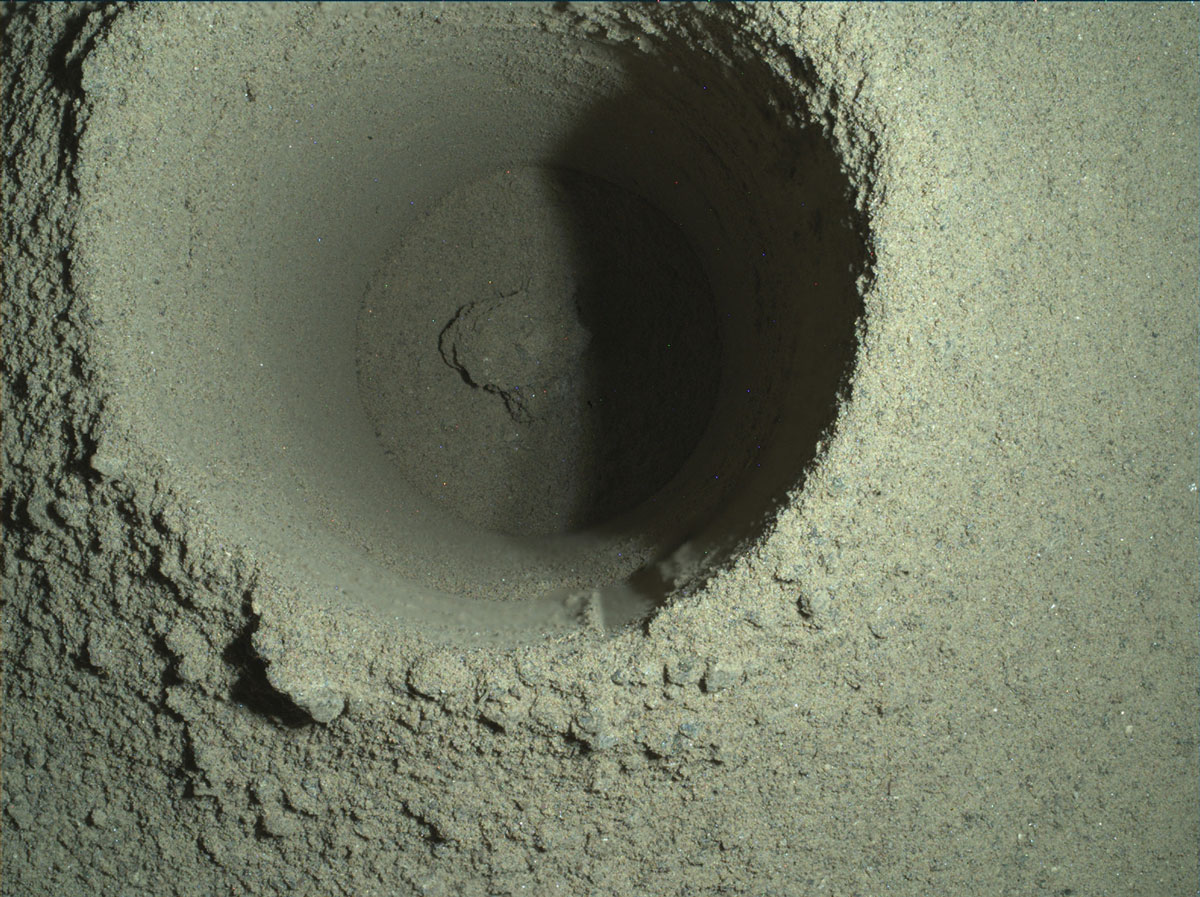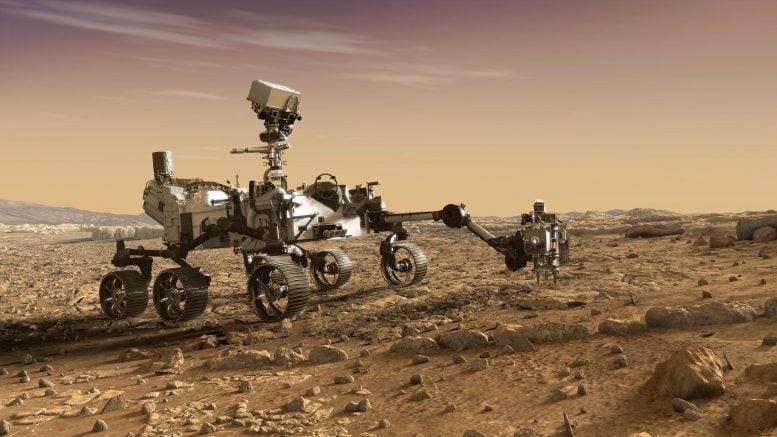The rover will scoot to a different location to find a new spot to scoop up dirt samples
:format(webp)/cdn.vox-cdn.com/uploads/chorus_image/image/69755429/26115_NavCam_Left_LF_0164_0681506334_116CWS_N0060000NCAM00315_0A00LLJ01.0.jpeg)
NASA’s Mars rover, Perseverance, is getting ready for another attempt, in the coming weeks, to scoop up Martian rocks after its first attempt earlier this month didn’t play out as engineers expected. The rover’s sample-caching arm worked, engineers say, but the sampling tube turned up empty.
Now the rover, a science lab on wheels that landed on Mars in February, will drive to a new location called Citadelle for a second shot at picking up its first rock sample. This time, to make sure a sample is actually collected, engineers will wait for images of the sample tube to come back before it gets processed and stowed inside the rover’s belly.
“We were just super excited that the hardware worked from beginning to end without any faults. And then there was that surprise — ‘No sample? What do you mean no sample?’,” Louise Jandura, the Chief Engineer for Sampling & Caching on NASA’s Perseverance team, says of the first attempt on August 5th. “So quickly, after that sunk in, we started to do the investigation.”
The rock that Perseverance’s sampling drill bit dug into wasn’t as sturdy as scientists thought it’d be. What was supposed to be a fairly solid rock core turned out to be a crumbly powder that slipped out of the rover’s sampling tube. After finding the sample tube was empty, mission staff used the rover’s cameras to analyze remnants of the hole that Perseverance drilled. They figured the mound of dust around the hole and some material at the bottom of the hole were what slipped out.

/cdn.vox-cdn.com/uploads/chorus_asset/file/22796030/26115_NavCam_Left_LF_0164_0681506334_116CWS_N0060000NCAM00315_0A00LLJ01.jpeg)
“The rock simply wasn’t our kind of rock,” Jennifer Trosper, Project Manager at NASA’s Jet Propulsion Laboratory, wrote in a blog post on Thursday. “Although we had successfully acquired over 100 cores in a range of different test rocks on Earth, we had not encountered a rock in our test suite that behaved in quite this manner.”
Perseverance’s seven-foot, five-jointed sampling arm reaches out from the front of the rover toward a rock of interest with a large shoe box-sized head, or turret, on the end that weighs 100 pounds. That head packs a hollow drill bit, formally called a Rotary Percussive Corer Drill, that drills into the rock and traps material inside a tube, which gets stowed back into the rover and processed inside another tube until it’s ready to get left somewhere on the Martian surface.
The drill bit used for Perseverance’s first sampling attempt is for collecting rock cores. Some of the rover’s 9 drill bits are better suited for collecting regolith — the more crumbly, dirt-like material that engineers accidentally encountered during the first sampling attempt.
/cdn.vox-cdn.com/uploads/chorus_asset/file/22796020/Aug_20_2021_17_07_53.gif)
Perseverance’s mission to collect up to 35 samples of Martian rocks is the first leg of a three-pronged endeavor to return those samples back to Earth sometime in the 2030s. The rocks, stowed inside tiny chalk-sized sample tubes, would represent the first pristine Mars samplings ever captured and returned to Earth by humans. Perseverance will leave the tubes somewhere on the Martian surface for a future NASA robot to collect and launch into Mars’ orbit, where another spacecraft built by the European Space Agency will catch and carry it the rest of the way home.
NASA engineers spent nearly a decade designing and building the rover’s sampling system, which Perseverance’s chief engineer Adam Steltzner has described as “the most complicated, most sophisticated thing that we know how to build.”
NASA’s Perseverance to attempt second Mars soil scoop, hoping rocks don’t ‘crumble’
- ghost and aum
-

 2
2



3175x175(CURRENT).thumb.jpg.b05acc060982b36f5891ba728e6d953c.jpg)
Recommended Comments
There are no comments to display.
Join the conversation
You can post now and register later. If you have an account, sign in now to post with your account.
Note: Your post will require moderator approval before it will be visible.